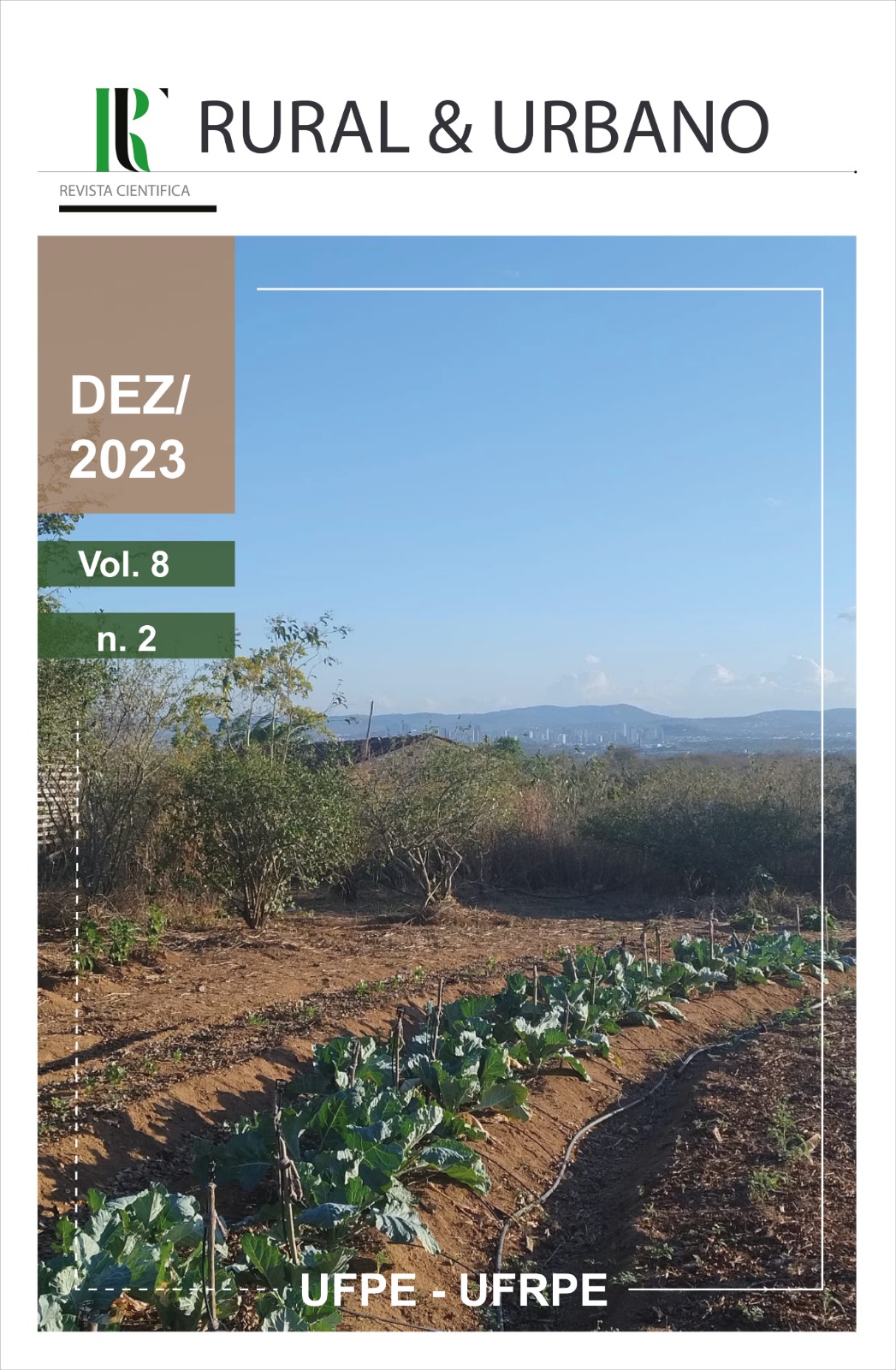Geographic research and illegal markets: links between territorial innovation and informality
DOI:
https://doi.org/10.51359/2525-6092.2023.259186Keywords:
geographic search, illegal markets, innovation, informalityAbstract
In order to deepen the epistemological debate versus the empirical object of geography and starting from the articulation between notions of territorial innovation and illegal markets, this article aims to cooperate in the systematization of principles capable of composing a specific dialogue of geographic knowledge on social issues linked to the transformations of space, intermediated by the use and formulation of analytical criteria, related to the urban reality of illegal markets. A correlative construction is sought between theoretical models of geographic investigation, adapted to the ambivalent and diffuse character of contemporary relations of illicit and informal markets, constantly linked to the technical innovation of the territory. The observation ballast derives from peripheral areas on the 'lived' space in which the population develops creative and informal means of survival based on the mechanisms of formal commerce (competition, resilience, self-regulation, innovation). Thus, the debate is introduced with a bibliographical review on some normative conceptions that surround the illegal economic dynamics in suburbs and the power relations underlying the territory's producing agents. Finally, an interdisciplinary analysis of the creative (innovative) reality integrated with informal patterns of sociability is proposed, emphasizing the understanding of the imbrications between the abstract real x concrete real, which integrate the sense of renewal of territorialities in the periphery, considered as an economic substratum in motion.
References
ANDRADE, E. S. y GOMES, E. T. A. O estudo do comércio informal ao longo dos principais eixos de circulação da cidade do Recife - Brasil: a moradia como local de (re)produção do capital, o caso da avenida Recife. Scripta Nova. Revista electrónica de geografía y ciencias sociales. Barcelona: Universidad de Barcelona, 1 de agosto de 2003, vol. VII, núm. 46(044). Disponível em : <http://www.ub.es/geocrit/sn/sn-146(044).htm> . Acessado em 16/07/2023.
ARENDT, Hannah. Sobre a violência. Rio de Janeiro: Relume-Dumará, 1994.
ARENDT, Hannah. A condição humana. Rio de Janeiro: Forense Universitária, 1987.
BECKERT, Jens. The Moral Embeddedness of Markets. MPIfGDiscussionPaper, No. 05/6, 2005. Disponível em: < http://hdl.handle.net/10419/19920> . Acessado em 16/01/2018
CERTEAU, M.A invenção do cotidiano I: as artes do fazer. Petrópolis: Vozes, 1994.
CORRÊA, R. L. Espaço: um conceito chave da geografia. In: CORRÊA, R. L, CASTRO, I. E.; P. C. Gomes (Orgs.). Geografia: conceitos e temas. Rio de Janeiro: Betrand Brasil, 2006.
FERNANDES, A. C. A diversidade da Geografia brasileira. In SPOSITO, Eliseu et al. Escalas e dimensões de análise e da ação. Rio de Janeiro, Consequência Editora, 2016.
FURTADO, C. Formação de capital e desenvolvimento econômico (1950). Série memórias do desenvolvimento. Cadernos do Desenvolvimento. Ano 1, n. 1 (2006). Rio de Janeiro: Centro Internacional Celso Furtado de Políticas para o Desenvolvimento, 2006.
KOSIK, K. Dialética do concreto. Tradução de Célia Neves e Alderico Toríbio. 8.reimpressão. Rio de Janeiro: Paz e Terra, 2010.
MINAYO, M. C. de S.; SOUZA, E. R. de. Violência e saúde como um campo interdisciplinar e de ação coletiva. História, Ciências, Saúde, Manguinhos, v. 4, n.3, p. 513-531, fev. 1998.
MISSE, Michel. O Rio como um bazar: a conversão da ilegalidade em mercadoria política. In MISSE, Michel(Org.). Crime e violência no Brasil contemporâneo: estudos de sociologia do crime e da violência urbana. Rio de Janeiro, Lumen Juris, 2006.
MORAES, Antonio Carlos Roberto. Geografia: pequena história critica. São Paulo: HUCITEC, 17ª ed. 1999.
ODALIA, N. O que é violência. São Paulo: Nova Cultural: Brasiliense, 1985.
RAFFESTIN, Claude. Por uma geografia do poder. São Paulo: Ática, 1993.
SANDEL, Michael J. Market Reasoning as Moral Reasoning: Why Economists Should Re-engage with Political Philosophy. Source: The Journal of Economic Perspectives, Vol. 27, No. 4 (Fall 2013), pp. 121-140. Published by: American Economic Association. Disponívelem<http://www.jstor.org/stable/23560025>. Acessado em 19/01/2018
SANTOS, Milton. A natureza do espaço: Técnica e Tempo, Razão e Emoção. 4. ed. São Paulo: Edusp, 2002.
SANTOS, Milton. Técnica, espaço, tempo: globalização e meio técnico-científico informacional.São Paulo: HUCITEC, 1994.
WAISELFISZ, Julio Jacobo. Mapa da violência 2012: Os novos padrões da violência homicida no Brasil. Versão para web. Disponível em: <http://mapadaviolencia.org.br/pdf2012/mapa2012_web.pdf>. Acessado em: 28 de fev. 2013a.
Downloads
Published
How to Cite
Issue
Section
License
Copyright (c) 2023 Paulo César de Oliveira, Ana Regina Marinho Dantas Barboza da Rocha Serafim, Gevson Silva Andrade

This work is licensed under a Creative Commons Attribution-NonCommercial-ShareAlike 4.0 International License.
Autores que publicam nesta revista concordam com os seguintes termos:
a) Autores mantém os direitos autorais e concedem à revista o direito de primeira publicação, com o trabalho simultaneamente licenciado sob a Creative Commons Atribuição-Não Comercial-Compartilha Igual 4.0 Internacional  , que permite o compartilhamento do trabalho com reconhecimento da autoria e publicação inicial nesta revista.
, que permite o compartilhamento do trabalho com reconhecimento da autoria e publicação inicial nesta revista.
b) Autores têm autorização para assumir contratos adicionais separadamente, para distribuição não-exclusiva da versão do trabalho publicada nesta revista (ex.: publicar em repositório institucional ou como capítulo de livro), com reconhecimento de autoria e publicação inicial nesta revista.
c) Autores têm permissão e são estimulados a publicar e distribuir seu trabalho online (ex.: em repositórios institucionais ou na sua página pessoal) a qualquer ponto antes ou durante o processo editorial, já que isso pode gerar alterações produtivas, bem como aumentar o impacto e a citação do trabalho publicado.

